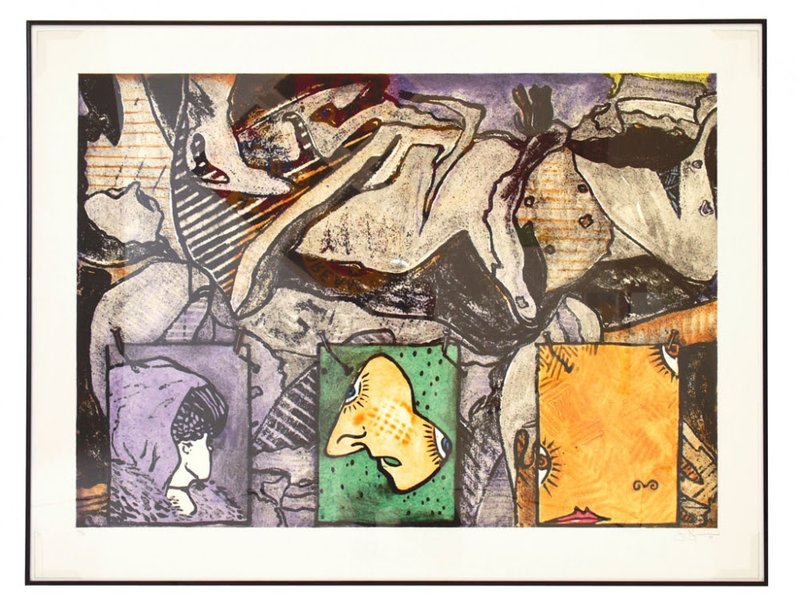
I think contemplating Johns at this moment is a reminder that not trying to show your whole self can result in a more accurate picture, which is to say, one still unknown. There is a danger to this kind of legibility, as an artist who takes it up can too easily be labeled a “gay Picasso,” or seen as reducing queer experience to a performative identity. However, I do think the privileges of my generation have brought a new comfort with visibility and use of allusion. I don’t want to say that Johns represents himself in a way that is closeted, or that he references Picasso from the closet. All the better to use his actual language for our own ends. I and many other artists working today know that we will never be Picasso. He wants to be Picasso by cracking his methodology. Johns treats Picasso like a cutout piece of newspaper, a found thing he can remake and repurpose. Most of my work depicts my own naked body-not merely the shape cast by it-as I understand how it could be represented with the language of Picasso. Spending some time with “The Seasons” has reinforced my thoughts on how “out” painters are compared to our predecessors. In Spring, the well-known silhouette that could either be a rabbit or a duck is tucked behind a handprint- another sign of someone who wishes to be two things at once, or never fully resolved. But in each painting of his suite, Johns has collaged a web of objects, landscape elements, his own artworks, and obscure art historical references. Picasso and the object of his desire are plainly described. In that painting, the artist casts a shadow across a painting of a nude woman. Johns’s self-portraits in “The Seasons” appear to reference Picasso’s The Shadow (1953). Courtesy Sikkema Jenkins and Co., New York Louis Fratino: July, 2020, oil on canvas, 57 by 38 inches. That’s a feeling I get from much of Johns’s work: he’s revealing the factual truth of something but not showing a picture of it. It truthfully records the body’s shapes and forms. A body print is a very truthful and unforgiving process of revealing oneself. I’ve wanted to do that too, and after I saw Johns’s body prints in “Gray” at the Met in 2008, I tried some of my own. He reveals himself, but only in an anonymous way. The parts of his body in Target with Plaster Casts aren’t just his-they’re the highlights of a male body. As if he needs to be seen but only partially, or only from certain vantage points. The prints and the casts seem to come out of Johns’s longtime interest in himself as something to be seen but not seen. ©2021 Jasper Johns/Licensed by VAGA at Artists Rights Society (ARS), New York

Jasper Johns: Skin, 1965, charcoal on oil paper, 22 by 34 inches. The plaster casts are also spiraling inward. By rolling his head across the paper he rendered a face from multiple angles, a person doubling inward. He made other body prints like these, and they’re very similar to the casts.
#Jasper johns for kids skin#
In Study for Skin I (1962), you can see a choreographed roll of his face from side to side, captured in charcoal on paper. They force you to accept marks in all their particularities. Like Johns, I’m really interested in potato-stamp, snow-angel types of printing processes, the simplest forms of printmaking. When he works with encaustic it’s like he’s making casts of marks.

Johns is the great granddaddy of the readymade mark. He has remade his body as a found object. Johns’s foot was in the world and now it’s part of the painting. The stillness makes the work feel creepy and deathlike, but also alive, like a very challenging puzzle. There’s a stillness and a concentration that’s so simple and literal. But the body in Johns’s work feels frozen, like time has been sucked out of the room. So much art that is about the body is about movement, evoking an active gesture. Keltie Ferris: Trifecta, 2015, oil and powdered pigment on paper, 491/2 by 52 inches.


 0 kommentar(er)
0 kommentar(er)
